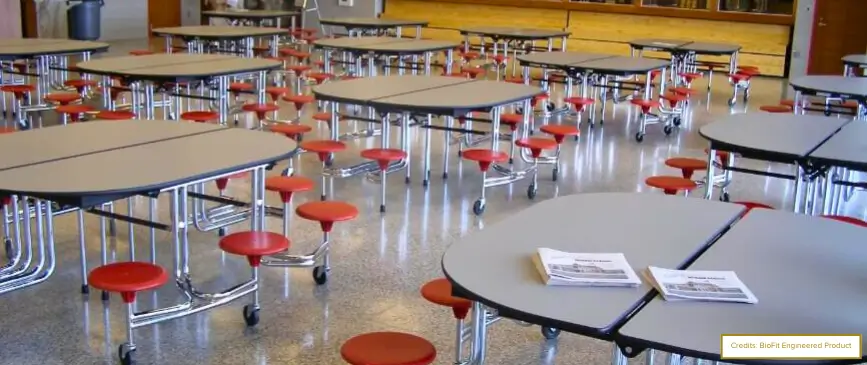Introduction
You’ve likely seen the acronym USDA – maybe on a school lunch menu, nutrition label, or a flyer sent home with a student. But what exactly does the United States Department of Agriculture (USDA) have to do with your local school’s food?
Through its Food and Nutrition Service (FNS), the USDA plays a vital role in shaping what students eat every day. They provide schools with a powerful tool: an extensive library of recipes specifically for cafeterias. These recipes are designed to be nutritious, affordable, and meet all the rules schools need to follow.
This guide explores how these recipes are developed, why they matter, and how educators, school nutrition professionals, and even parents can use them to promote healthier meals in schools.

What Are USDA School Cafeteria Recipes?
USDA school cafeteria recipes are not your average cookbook fare. They are standardized recipes developed to meet the rigorous requirements of the National School Lunch Program (NSLP) and the School Breakfast Program (SBP). These programs aim to provide all students, regardless of background with access to balanced meals during the school day.
Each USDA recipe is tested for taste, texture, nutritional content, and portion size, making them perfect for busy school kitchens that serve hundreds of students each day.
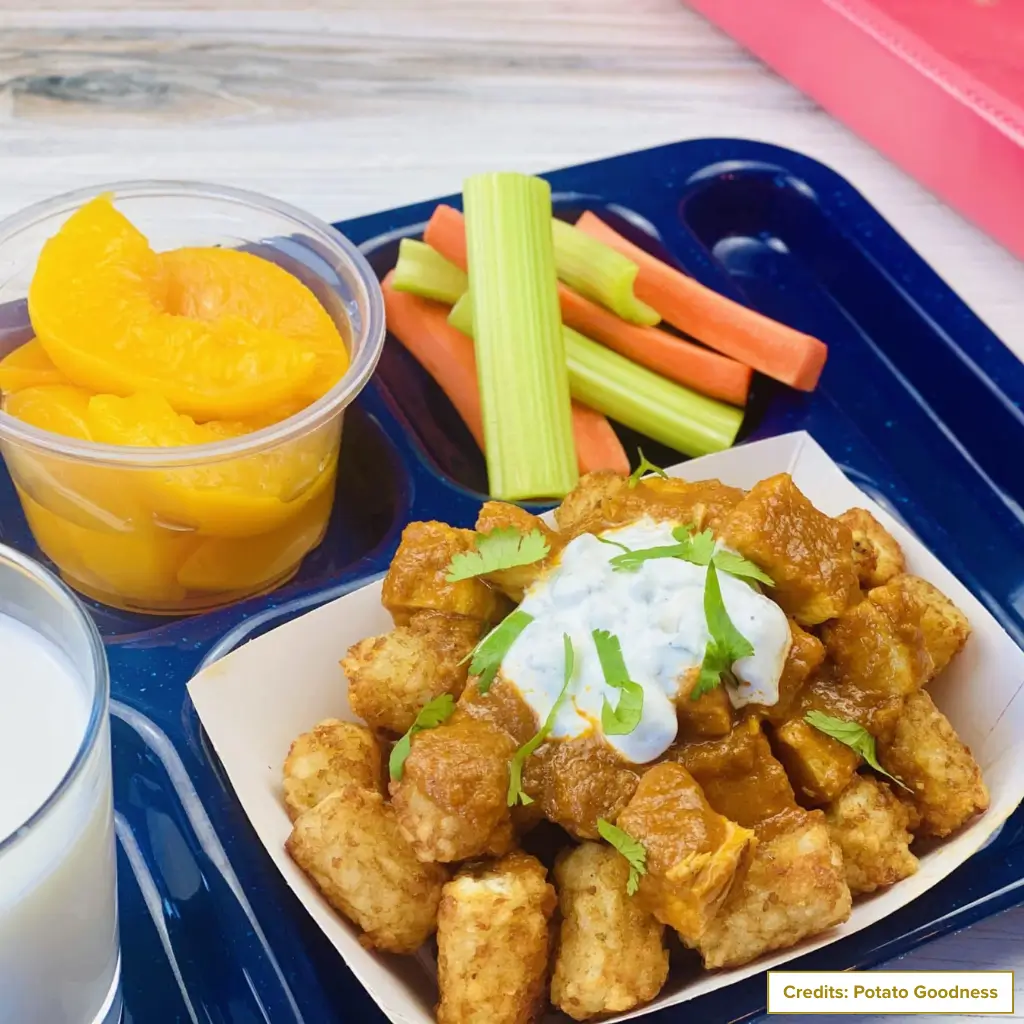
Available through resources like the What’s Cooking? USDA Mixing Bowl and the Institute of Child Nutrition (ICN) These recipes include precise instructions, nutrition details, and food safety tips.
So why do these recipes matter? Here’s what they aim to do:
- Promote healthy eating habits by limiting added sugars, saturated fats, and sodium.
- Utilize USDA-donated foods to maximize resources.
- Create consistent results across schools.
- Adapt to special dietary needs, including students with food allergens.
- Appeal to a wide range of students through culturally responsive dishes.
Benefits of USDA Recipes for Schools
The importance of school meals can’t be overstated. For many students, especially those from low-income families, school breakfast and lunch may be the most consistent source of daily nutrition. The USDA’s recipes ensure these meals are nourishing, balanced, and educational.
Here are some key benefits:
- Academic Success: Meals based on USDA guidelines improve energy, concentration, and behavior. Whether it’s elementary school cafeteria food or meals served in high school cafeteria lines the goal is the same: fuel the brain to learn and grow.
- Promoting Long-Term Health: USDA recipes focus on whole grains, lean proteins, fruits, and vegetables to help prevent chronic diseases like obesity, diabetes, and heart conditions from an early age.
- Tackling Food Waste: USDA recipes help reduce food waste in schools by using standardized portion sizes and consistent preparation. This saves money and resources while ensuring kids eat what’s served.
- Whole-Child Approach: Meals served with care and consistency help build a positive school culture. Lunchtime can become a moment of comfort and connection in a student’s day.

Inside the Recipes: What’s on the Menu?
USDA Foods are chosen for their quality, cost-efficiency, and nutritional value. The ingredients are minimally processed making them versatile and customizable to meet regional and cultural preferences. This helps schools improve school cafeteria food while staying within budget.
Let’s look at the types of foods offered:
- Vegetables: Options span all five subgroups: dark green, red/orange, legumes, starchy, and others. These come fresh, frozen, or canned, often with low sodium or no salt added.
- Fruits: They are available in multiple formats, including dried, frozen, canned (usually in extra light syrup or unsweetened), and fresh, making them perfect for meals and snacks.
- Meat and Alternatives: The USDA prioritizes nutrient-dense proteins: lean meats, beans, poultry, fish, eggs, cheese, and even nuts. These are ideal for creating entrees and vegetarian options.
- Whole Grains: Schools can choose from whole grain-rich pasta, flours, cereals, rice, and tortillas that meet dietary guidelines.
By offering nutrient-dense items across all food groups, USDA supports healthy school lunches that are also satisfying and delicious.
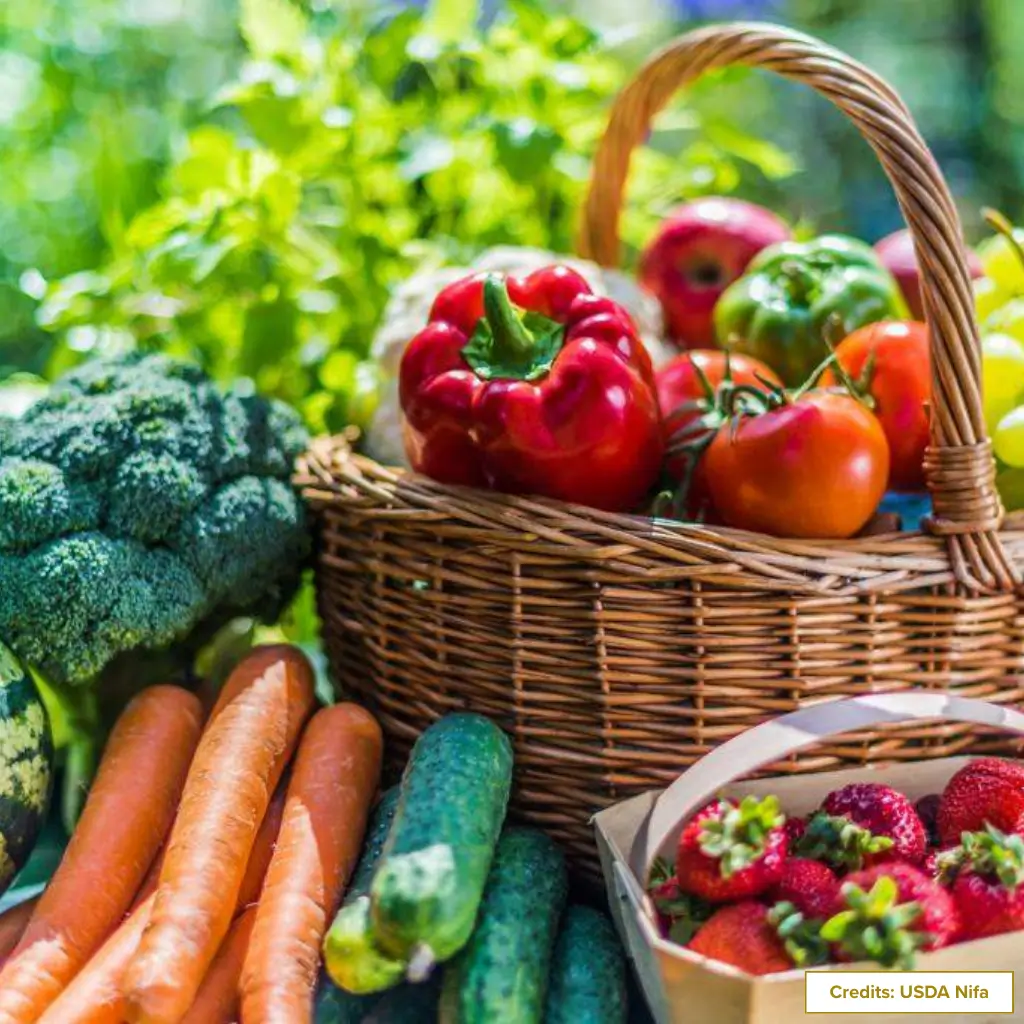
How to Use (and Adapt) USDA Recipes in Your Cafeteria
Using USDA recipes isn’t just for large operations. Whether you’re managing a single school cafeteria or a district-wide program, the steps below can help you get started.
1. Explore the Recipe Database
Use online resources to find recipes by meal type, ingredients, or nutrition needs.
1. Plan Weekly Menus
Include a variety of entrees, sides, and snacks that align with caloric and nutrient goals.
2. Train Cafeteria Staff
Ensure cafeteria workers understand recipe procedures, portioning, and food safety.
3. Taste Test with Students
Get direct feedback to see what meals students enjoy most. This improves adoption and reduces waste.
4. Adapt for Local Preferences
Tweak seasonings, incorporate locally grown produce or adjust textures to suit your community.
5. Ensure Compliance
Double-check with NSLP requirements to maintain eligibility for reimbursements.
6. Monitor Food Costs
Many USDA recipes include cost-per-serving details. Use this data to stay on budget and make the most of your resources.
7. Use Technology
Modern cafeteria software can integrate recipes with inventory and menu planning, simplifying operations.
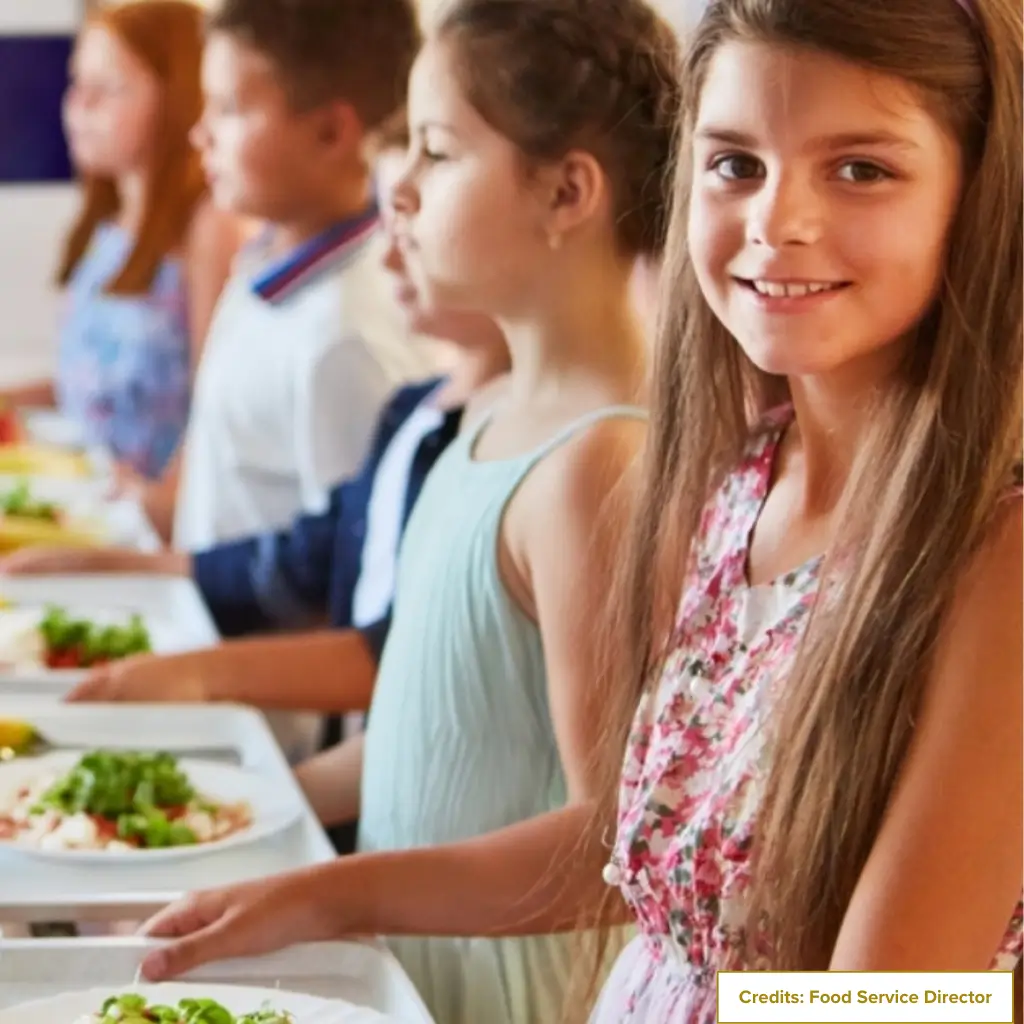
Bringing USDA Recipes Home
USDA recipes aren’t just for cafeterias. Families can also benefit from their simplicity, nutrition, and kid-friendly appeal. This is a great opportunity for schools to reinforce that nutritional education is important for schools and for homes.
Parents can try scaled-down versions of these recipes to create healthy, affordable meals that their children already know and enjoy from school. Here are some examples that work well for home kitchens:
-
Whole Wheat Pancakes
A fiber-rich take on the classic, made with whole wheat flour.
-
Salmon Tacos
Using whole-grain tortillas and fresh toppings, this meal is both fun and nutritious.
-
Peachy Oatmeal Bake
Perfect for busy mornings, this bake includes oats, milk, peaches, and cinnamon.
-
Spaghetti and Meat Sauce
A comforting dish using lean meat and whole grain pasta.
-
Cottage Cheese and Fruit Bowls
A light and protein-packed snack or breakfast that combines cottage cheese, granola, and fresh fruit.
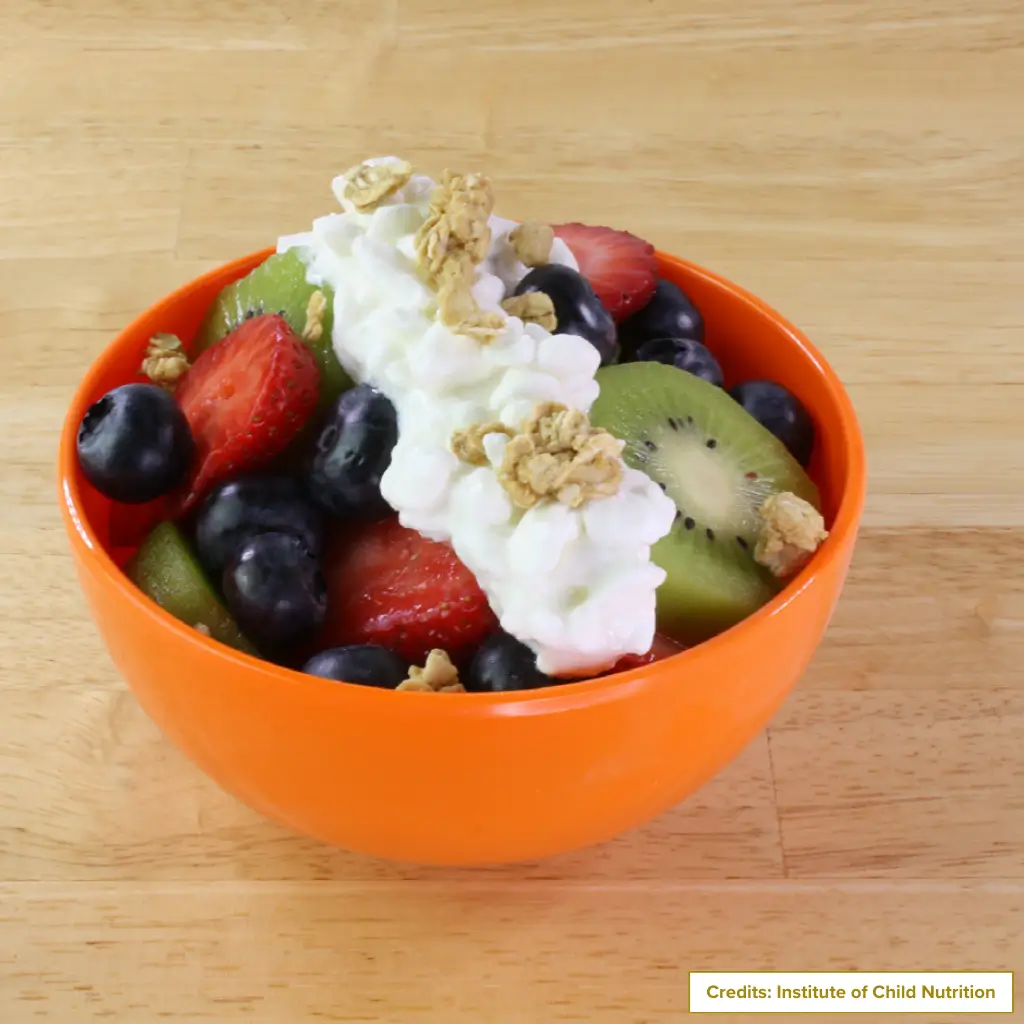
These recipes are part of the USDA’s efforts to provide nutritious and appealing meals in schools. Detailed instructions for these and other recipes can be found in the Child Nutrition Recipe Box.
Beyond Public Schools: Expanding the Reach
It’s easy to think that USDA recipes are only for traditional public schools but their impact goes beyond that. Any educational institution that participates in federal meal programs including private school cafeterias can access and use these recipes to elevate their meal service.
Whether it’s a charter school, parochial school, or independent high school, these recipes offer a structured yet flexible way to serve meals that meet national standards without reinventing the wheel. This makes them a valuable resource for schools that want to offer school cafeteria food that tastes good, fuels learning, and supports well-being.
By extending the reach of these recipes, the USDA supports a consistent and equitable approach to child nutrition across the country.
Conclusion
In every school cafeteria, behind every lunch tray, there’s an opportunity to serve a meal that fuels learning, supports health, and creates community. USDA cafeteria recipes make that possible with a thoughtful, practical system designed for real-world success.
From meeting nutrition standards to addressing student preferences these recipes give schools the tools they need to create meals that matter.
No matter the setting, public or private, rural or urban, the message is clear: good food matters. And when it comes to students, it might just matter the most during lunch.
FAQs
Q: Are USDA school recipes only for public schools?
A: No. Any school or institution that participates in USDA meal programs, including private and charter schools, can use these recipes.
Q: Where can I find USDA school recipes online?
A: You can access them through the USDA’s What’s Cooking? Mixing Bowl website or the Institute of Child Nutrition (ICN).
Q: Have these recipes been tested for taste?
A: Yes. USDA recipes go through a rigorous testing process, including taste tests with students and feedback from nutrition professionals.

